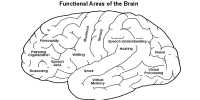According to a new study, those who suffer from migraines or frequent tension headaches have lower job performance in three areas in particular. The researchers expect that the new information would help companies become more accommodating to those who suffer from headaches.
Consider your head hammering. And it gets much worse when you try to move, a door crashes, or the curtains are drawn. In an ideal world, you would crawl under your covers in a dark and silent room. This is how those who suffer from migraines or frequent tension headaches may feel. A migraine episode can persist anywhere from 4 to 72 hours if left untreated, and tension headaches can linger up to a week. It is estimated that roughly 770,000 people in Denmark suffer from migraine or frequent tension headaches.
For the first time, a new study from the University of Copenhagen demonstrates explicitly how migraine or recurrent tension headaches influence the capacity to work. “It is notably the ability to recall, make quick judgments, and conduct intense physical labor that causes difficulty for persons with certain headache diseases,” explains Project Manager and research author Kirsten Nabe-Nielsen.
She expects that the study would assist to concentrate attention on the effects that headaches may have on working life. “Migraine is the primary cause of functional disability in people under the age of 50. Furthermore, headaches have a negative impact on sick leave and productivity. As a result, workplaces would benefit from becoming more aware of the latent potential found here” Kirsten Nabe-Nielsen adds: “Indeed, we cannot afford not to take it seriously.”
According to a survey of the Danish working population, 24% of women and 10% of men suffer from migraines or frequent tension headaches. According to Kirsten Nabe-Nielsen, “the possibilities of adapting work during headache episodes depend on the type of employment you have,” emphasizing, “So also in this context, there is a big inequality in health.”
According to some research, headaches are the second leading cause of sick leave, after only infectious disorders. As a result, headache diseases impose significant personal and societal expenses.
Kirsten Nabe-Nielsen
While people with academic jobs can often go home a little earlier, work from home, or choose to postpone the tasks that require the most concentration, others, such as cleaning staff or nursing staff in old people’s homes, do not have the same opportunities to adjust working hours or postpone the tasks to be solved. Instead, they may have to call in sick.
According to Kirsten Nabe-Nielsen, finding out which solutions may be beneficial requires creativity on the part of both the management and the employees: “It is about getting a solid overview of the tasks that need to be completed and then discussing the best approach to organize a work day. There may be chores that can be completed later in the day, or that can be completed at a moderate pace or in a quiet area until the discomfort has subsided.”
“I am going to lay down”
Kirsten Nabe-Nielsen feels that headache diseases such as migraine and recurrent headaches are an underreported epidemic. “We’re stuck with the idea of the character Maude from the Danish TV series Matador stating ‘I’m going to lay down’ whenever she’s stressed,” she says, explaining:
“Most people have had headaches. As a result, it may be difficult to comprehend how severe migraine and frequent headaches can be for a coworker, friend, or family member. People still believe that swallowing a medication will suffice.”
Kirsten Nabe-Nielsen argues that there is a general lack of understanding regarding the significance of headache disorders in the general public. The same is true for using too many pain relievers to relieve a headache, as doing so may result in more headaches.
“According to some research, headaches are the second leading cause of sick leave, after only infectious disorders. As a result, headache diseases impose significant personal and societal expenses” Kirsten Nabe-Nielsen explains.

Associated with depressive symptoms and muscular pain
The researchers analyzed self-reported data from over 5,000 active Danes with various educational levels, ranging from persons with long academic degrees to unskilled labourers. “It’s novel because we combine information regarding migraine and regular headaches with participants’ usage of medicines and their description of their capacity to cope with seven different, specific work requirements,” explains Kirsten Nabe-Nielsen.
The participants were also asked about their health, depressive symptoms, and muscle and joint pain. The researchers discovered that depressive symptoms and discomfort in muscles and joints play an important role in the context of headache disorders and ability to work.
“Our findings suggest that treating depressive feelings and pain in the musculoskeletal system may be a key component in improving the ability to work among patients with headache disorders,” says Kirsten Nabe-Nielsen.
Previous research has found that headaches, muscular and joint pain are associated with depressive symptoms. Mood changes, among other things, may occur, and neck pain may be a warning sign of a migraine attack, just as repeated headache attacks may have a detrimental impact on mood.
Under- and overmedication
The researchers discover that headache sufferers who do not use painkillers at all and those who use painkillers on a daily basis have the lowest ability to work. “This begs the question of whether these two groups are being undertreated or overtreated,” says Kirsten Nabe-Nielsen.
According to Kirsten Nabe-Nielsen, it appears to indicate that the group taking painkillers on a daily basis may not receive a treatment that works as intended – and they may even suffer from medication overuse headaches.
“On the other hand, looking at the group that does not take any medication at all appears to indicate that they are undermedicated. And perhaps it has something to do with the fact that they do not consider their disease severe enough to seek medical assistance – but that is just our guess” says Kirsten Nabe-Nielsen.
Facts: What are migraines and frequent headaches?
Migraine and tension headache are the two most prevalent types of headaches. Migraine is characterized by periods of moderate to severe pulsing headache, nausea, vomiting, and sensitivity to light and sound. Chronic migraine attacks occur more than 14 days per month.
Tension headaches are distinguished by mild to severe discomfort on both sides of the head. Usually, nausea and vomiting do not occur. Chronic headaches occur on more than 14 days out of the month.
Facts: Three recommendations
Based on the findings of the study and prior research, the researchers have made three recommendations:
- People suffering from headaches should consult a doctor for guidance and possibly medical treatment.
- Managers and employees should discuss the options for modifying work during attacks to reduce absenteeism, such as the ability to work in a quieter room or outside, the ability to perform less physically demanding tasks, or the ability to perform tasks that are not emotionally or cognitively demanding.
- In order to improve the entire health-related quality of life of patients with headache problems, we must include other pain disorders (e.g., neck-shoulder pain) and mental health.
















